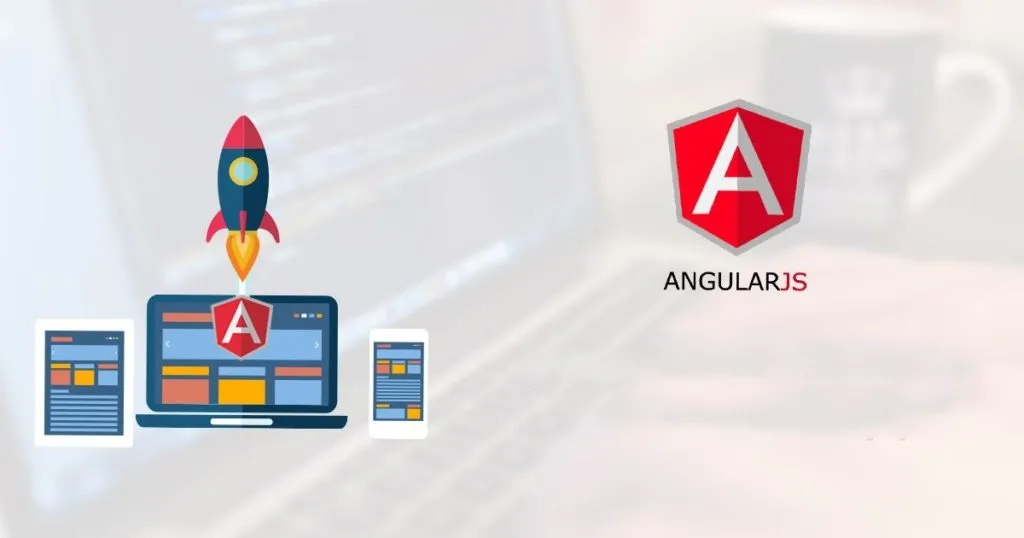AngularJS The Comprehensive Guide to this Powerful JavaScript Framework
In the ever-evolving world of web development, AngularJS has emerged as a powerful and versatile JavaScript framework that has transformed the way developers build dynamic and interactive web applications. With its robust features, comprehensive toolset, and strong community support, AngularJS has become a widely adopted solution for creating efficient and scalable web applications.
What is AngularJS?

AngularJS is an open-source, client-side JavaScript framework developed and maintained by Google. It is designed to simplify the development of single-page applications (SPAs) by providing a structured and modular approach to building web applications. AngularJS aims to address the challenges of creating complex and dynamic user interfaces, handling data binding, and managing application logic.
Key Features of AngularJS
- Data Binding: AngularJS offers a powerful two-way data binding mechanism, which automatically synchronizes the model and the view, reducing the amount of boilerplate code developers need to write.
- Dependency Injection: AngularJS has a built-in dependency injection system that makes it easier to manage and test the different components of an application.
- Directives: AngularJS allows developers to create custom HTML tags, attributes, and elements, enabling the creation of reusable and modular components.
- Routing: AngularJS provides a robust routing system that allows for the creation of single-page applications with multiple views and navigation.
- Modules: AngularJS applications are built using modules, which help organize and manage the different components of an application.
- Testing: AngularJS includes built-in support for unit testing and end-to-end testing, making it easier to write and maintain high-quality code.
Why Use AngularJS?
AngularJS has gained widespread popularity among web developers for several reasons:
1. Improved Productivity
AngularJS simplifies the development process by providing a well-structured and opinionated framework. Developers can focus on building the application’s core functionality rather than spending time on repetitive tasks, such as setting up data bindings or managing the DOM.
2. Modular Design
AngularJS encourages a modular design approach, where the application is divided into smaller, reusable components. This modular structure makes the codebase more maintainable, scalable, and testable.
3. Testability
AngularJS has a strong focus on testability, with built-in support for unit testing and end-to-end testing. This helps developers catch and fix bugs early in the development process, leading to higher-quality applications.
4. Extensive Ecosystem
AngularJS has a large and active community, which has resulted in the development of a rich ecosystem of third-party libraries, tools, and resources. Developers can leverage these components to accelerate their development process and build more robust applications.
5. Declarative Syntax
AngularJS uses a declarative syntax, which allows developers to describe the desired behavior and structure of the application, rather than focusing on the implementation details. This makes the codebase more readable and easier to understand.
AngularJS Concepts and Components

To fully understand AngularJS, it’s essential to explore its core concepts and components.
1. Modules
AngularJS applications are built using modules, which are the building blocks of the framework. Modules help organize and manage the different components of an application, such as services, controllers, and directives.
Subheadings:
- Defining Modules
- Dependency Injection in Modules
- Module Configuration and Run Blocks
2. Scope
The scope in AngularJS is a crucial concept, as it represents the model of the application. Scopes are responsible for managing the data and the state of the application, and they are used to facilitate data binding between the view and the controller.
Subheadings:
- Scope Hierarchy
- Scope Inheritance
- Scope Methods and Events
3. Controllers
Controllers in AngularJS are responsible for managing the application’s logic and data. They define the behavior and properties of the view, and they interact with the scope to update the model and the user interface.
Subheadings:
- Defining Controllers
- Controller Dependencies
- Controller Lifecycle Hooks
4. Directives
Directives in AngularJS are custom HTML elements, attributes, or classes that extend the functionality of the DOM. Developers can create their own custom directives to encapsulate specific behaviors and reuse them throughout the application.
Subheadings:
- Directive Basics
- Directive Scope and Isolated Scope
- Directive Lifecycle Hooks
5. Services
Services in AngularJS are singleton objects that provide reusable functionality across the application. They are used to encapsulate business logic, handle data fetching, and manage cross-cutting concerns.
Subheadings:
- Defining Services
- Service Types (Factory, Service, Provider)
- Service Injection and Dependency Management
6. Routing
AngularJS provides a robust routing system that enables the creation of single-page applications with multiple views and navigation. The routing system allows developers to define the application’s navigation structure and handle URL changes.
Subheadings:
- Configuring Routes
- Route Parameters and Query Parameters
- Nested Views and Multiple Views
Implementing AngularJS in Web Development

Now that we’ve covered the core concepts and components of AngularJS, let’s explore how to implement this framework in web development projects.
1. Setting up an AngularJS Project
To start an AngularJS project, you’ll need to include the AngularJS library in your HTML file. You can either download the library or use a content delivery network (CDN) to include it.
Subheadings:
- Downloading and Including AngularJS
- Creating a New AngularJS Application
- Bootstrapping the AngularJS Application
2. Building the User Interface
AngularJS provides a declarative syntax that allows developers to define the structure and behavior of the user interface. This includes creating templates, using directives, and managing data binding.
Subheadings:
- Creating AngularJS Templates
- Using Directives to Extend HTML
- Implementing Two-Way Data Binding
3. Handling Application Logic
AngularJS controllers are responsible for managing the application’s logic and data. Developers can use controllers to define the behavior of the user interface and interact with the application’s model.
Subheadings:
- Defining AngularJS Controllers
- Injecting Dependencies into Controllers
- Implementing Controller Lifecycle Hooks
4. Organizing Application Structure
AngularJS encourages a modular design approach, where the application is divided into smaller, reusable components. This includes creating modules, services, and custom directives to manage the application’s complexity.
Subheadings:
- Structuring AngularJS Applications
- Creating Reusable Modules and Components
- Implementing Dependency Injection
5. Communicating with the Server
AngularJS provides built-in services for making HTTP requests and fetching data from the server. Developers can use these services to interact with RESTful APIs and handle asynchronous data loading.
Subheadings:
- Using the $http Service for HTTP Requests
- Implementing RESTful API Integration
- Handling Asynchronous Data Loading
6. Testing AngularJS Applications
AngularJS has a strong focus on testability, with built-in support for unit testing and end-to-end testing. Developers can use these testing tools to ensure the quality and reliability of their applications.
Subheadings:
- Setting up Unit Testing with Jasmine and Karma
- Implementing End-to-End Testing with Protractor
- Integrating Testing into the Development Workflow
Conclusion
AngularJS has emerged as a powerful and versatile JavaScript framework that has transformed the way developers build dynamic and interactive web applications. With its robust features, comprehensive toolset, and strong community support, AngularJS has become a widely adopted solution for creating efficient and scalable web applications.
By understanding the core concepts and components of AngularJS, such as modules, scope, controllers, directives, services, and routing, developers can leverage the framework’s capabilities to build high-quality, maintainable, and testable web applications. Furthermore, the implementation of AngularJS in web development, from setting up a project to handling application logic, communicating with the server, and testing the application, provides a comprehensive roadmap for developers to follow.
As the web development landscape continues to evolve, AngularJS remains a valuable tool in the arsenal of modern web developers, offering a structured and modular approach to building complex and dynamic web applications.